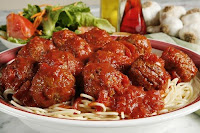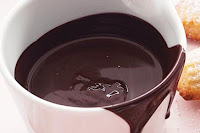1 stick (1/2 cup) unsalted butter, softened
6 veal cutlets (scallopini; preferably cut from round; no more than 1/4 inch thick; 1 1/2 pounds total)
3 ounces Gruyère, coarsely grated (1 1/2 cups)
2 ounces baby spinach leaves (1 1/4 cups)
1/3 cup dry white wine
3 tablespoons finely chopped fresh flat-leaf parsley
Mash anchovy paste into 4 tablespoons butter in a bowl until combined. Gently pound cutlets to slightly less than 1/8 inch thick between 2 sheets of plastic wrap with flat side of a meat pounder or with a rolling pin. Pat cutlets dry and season lightly with salt and pepper, then spread 1 1/2 teaspoons anchovy butter over top of each cutlet. (You will have a little butter left over.) Sprinkle 1/4 cup cheese over anchovy butter, leaving a 1/4-inch border, then arrange spinach leaves, overlapping in 1 layer, to cover cutlets. Working with 1 cutlet at a time, arrange with a short side nearest you and roll up tightly, then secure with a wooden pick.
Put oven rack in middle position and preheat oven to 425°F.
Pat rolls dry. Heat 2 tablespoons butter in a 12-inch ovenproof heavy skillet over moderately high heat until foam subsides, then sauté veal, turning occasionally, until golden on all sides, about 4 minutes total. Transfer skillet to oven and bake veal until just cooked through, about 5 minutes. Transfer veal with tongs to a platter (reserve skillet) and keep warm, covered.
Pour off all but 1 tablespoon fat from skillet, then add wine and deglaze skillet by boiling (on stovetop) over high heat, scraping up brown bits, until reduced by half, about 2 minutes. Remove from heat, then add any juices accumulated on platter and swirl in remaining 2 tablespoons butter (not remaining anchovy butter). Cook over low heat until incorporated. Stir in parsley and salt and pepper to taste.








 For centuries shepherds in the grasslands of Spain tended their flocks. They watched over a breed of sheep that provided high quality wool. They prepared their bread out in the field, with a bare minimum of tools available and their best method of preparation was to fry their bread.
For centuries shepherds in the grasslands of Spain tended their flocks. They watched over a breed of sheep that provided high quality wool. They prepared their bread out in the field, with a bare minimum of tools available and their best method of preparation was to fry their bread.


